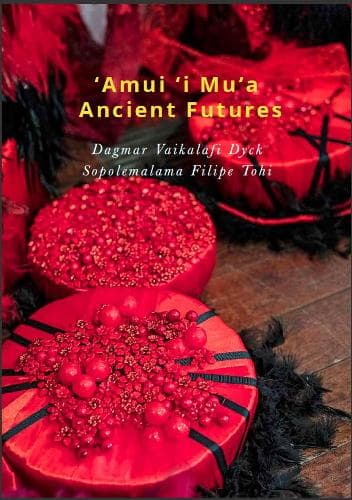Dagmar Vaikalafi DyckAuthor
Dagmar Vaikalafi Dyck (born 1972) is a New Zealand artist and art educator. Majoring in printmaking, she graduated from Elam School of Fine Arts with a Post-Graduate Diploma of Fine Arts in 1995. She was the first woman of Tongan descent to do so. Dagmar has exhibited work in New Zealand galleries and internationally since 1995 and her work is held in significant national collections across the country. In 2014 Dagmar received the Contemporary Artist Award at the Creative New Zealand Arts Pasifika Awards. Completing her Post Graduate Diploma in Teaching (Primary) in 2009 she is currently Senior Leader, art teacher and Inquiry Lead Teacher at Sylvia Park School, Auckland. In 2019 she received a Teacher Study Award and completed her Masters in Professional Studies - Education (Hons), focusing on culturally sustaining pedagogies within Visual Arts. She holds critical practitioner and sector knowledge across arts and education. Dagmar's maternal lineage hails from the Wolfgramm and Hemaloto kainga from the village of 'Utungake, Vava'u, Tonga. Her paternal lineage includes Dutch, Polish and German ancestry and links to her father's birthplace in Gdansk, Poland. Sopolemalama Filipe Tohi was born in Ngele'ia, Tongatapu, Tonga, and emigrated to New Zealand in 1978 with the goal of becoming an artist. In the early 1980s he taught at Rangimarie Arts and Crafts in Taranaki and left to become a full time artist in 1990. His practice has two levels. One is based in a traditional Tongan cultural practice of lalava, sennit lashing. Forms of lalava lashings were functional and decorative and used in the construction of houses around the Pacific. Before the arrival of metal, lashings bound a wide variety of items including houses, tools, and canoes. An example of Tohi's lalava is at the Fale Pasifika at Auckland University. The second aspect of his practice is more contemporary and includes working in a large variety of media: painting on canvas, carving in wood and stone, and designing abstract sculptural patterns in metal and other media. These patterns are based on lalava and their application in other dimensional forms moves the traditional to a contemporary setting. Tohi regularly participates in stone symposia around the world and his work is held in collections around the world. He is a featured artist in the Tangata O Le Moana permanent exhibition at Te Papa Tongarewa and has held residencies in Japan, Cook Islands, Fiji, England and the USA. Tohi was awarded his Samoan title, Sopolemalama, by Tupua Tamasese Tupuola Tufuga Efi in 2004 for lashing his Fale Maota in Nofuali'i, Samoa.
